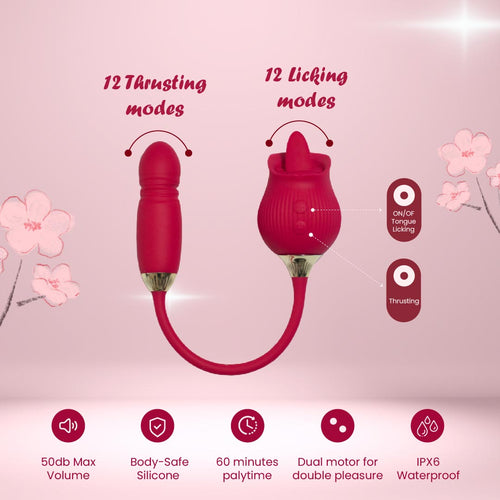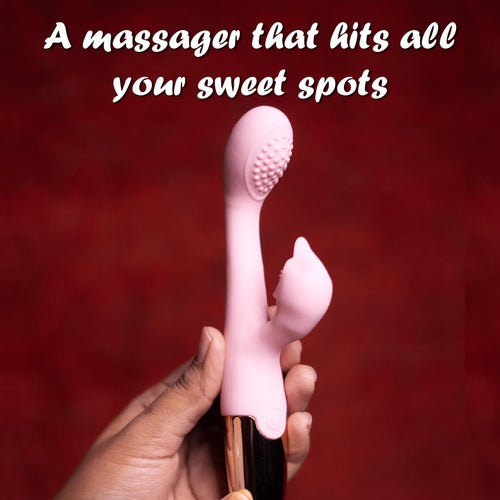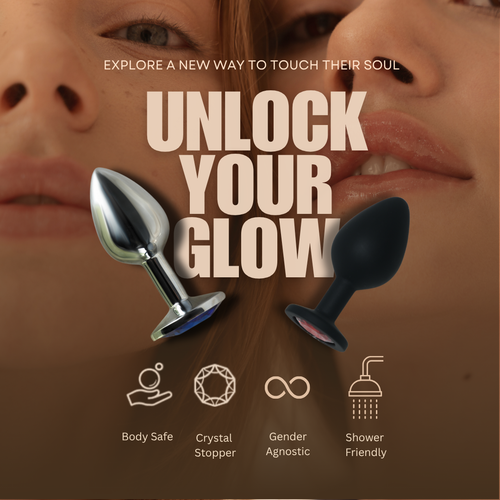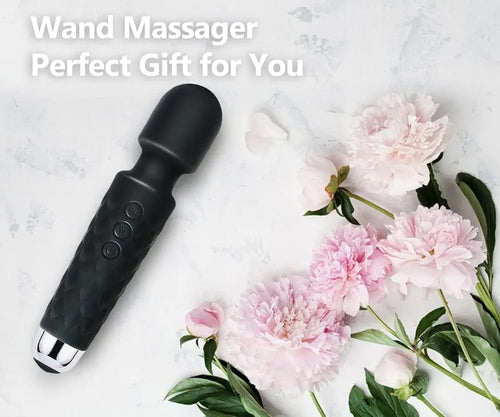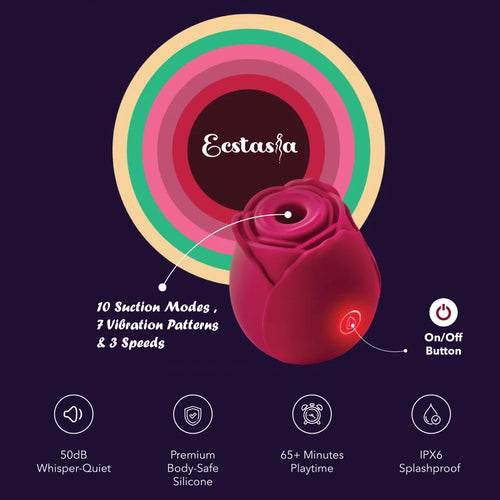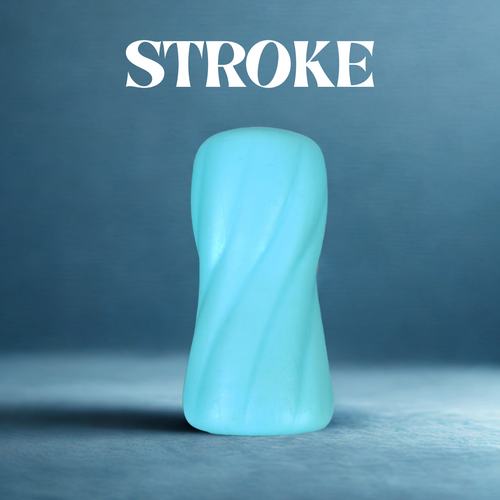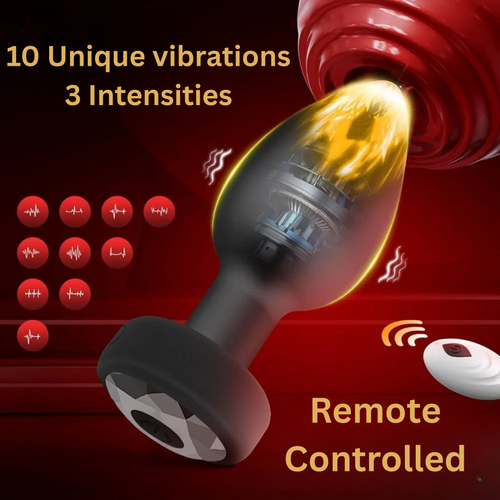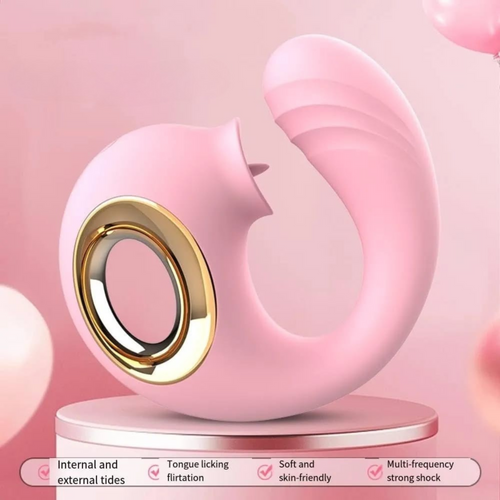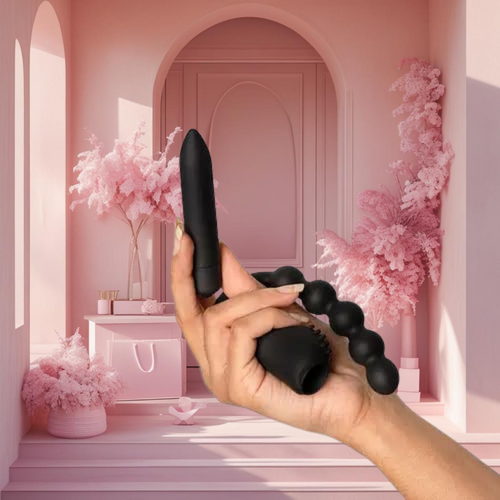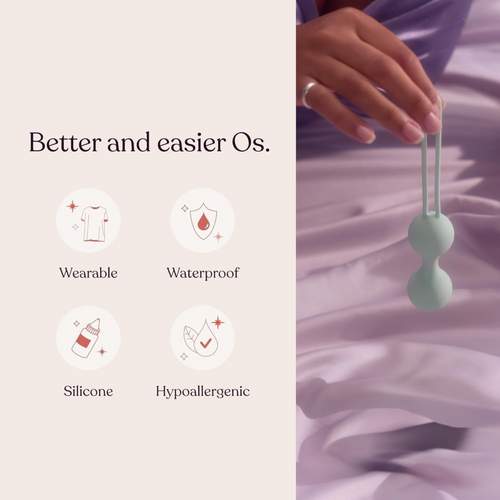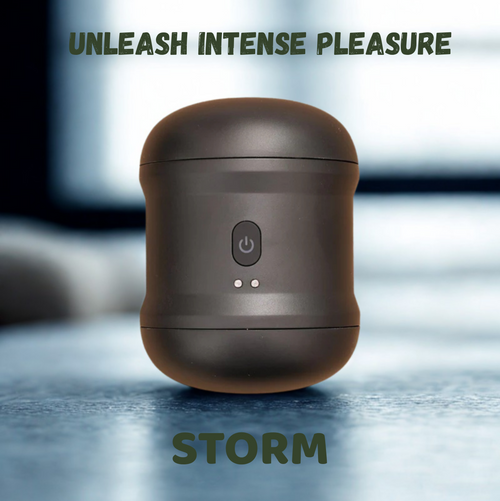
The Ultimate Guide to Female Condoms
Did you know that only 1.6% of women have ever tried female condoms? That's not because they don't work – it's because nobody's talking about them properly.
Let's fix that right now. This guide will walk you through everything you need to know about female condoms without the awkward medical jargon or judgment.
Female condoms offer something unique that male condoms don't: control that stays in your hands. They're effective, hormone-free, and put you in charge of your sexual health decisions – no partner negotiation required.
But here's what most articles won't tell you about female condoms – they actually have advantages that might make them better than male condoms for certain situations. Curious what those might be?
Understanding Female Condoms: What They Are and How They Work
How Female Condoms Differ from Male Condoms
Female condoms flip the script on traditional protection. While male condoms go on the penis, female condoms are inserted into the vagina or anus, giving the receptive partner control over protection.
Size is another obvious difference. Female condoms are larger and typically come with two flexible rings - one that sits inside and another that remains outside the body. Male condoms, on the other hand, are designed to fit snugly on a penis.
Material-wise, most female condoms are made from nitrile or polyurethane rather than latex, making them a fantastic option for people with latex allergies. These materials also conduct heat better than latex, which many users say enhances sensation during intimacy.
Here's a quick comparison:
|
Feature |
Female Condom |
Male Condom |
|
Who wears it |
Receptive partner |
Insertive partner |
|
Material |
Usually nitrile or polyurethane |
Usually latex |
|
Size |
Larger |
Smaller |
|
Heat transfer |
Better |
Less |
|
Put on |
Up to 8 hours before sex |
Right before sex |
|
Removal |
Immediately after |
Immediately after |
The Components and Design Features
Female condoms have thoughtful design elements that maximize both protection and pleasure. The outer ring covers part of the external genitalia, providing extra protection against skin-to-skin STIs like herpes and HPV that male condoms might miss.
The inner ring helps with insertion and keeps the condom in place during sex. The body of the condom is a soft, loose-fitting pouch that lines the vagina or rectum.
Most female condoms are pre-lubricated with silicone-based lube, which works well with all condom materials. The loose fit creates less friction and allows for more natural movement during sex.
Some brands include texture features on both the inside and outside surfaces to enhance pleasure for both partners - a clever touch that makes protection more appealing.
Effectiveness Rates for Pregnancy Prevention
When it comes to stopping pregnancy, female condoms are good but not perfect (what is?). With perfect use, they're about 95% effective, meaning 5 out of 100 women might get pregnant in a year of perfect use.
But let's be real - nobody's perfect all the time. With typical use (occasional mistakes, forgetting, etc.), the effectiveness drops to about 79%. That means about 21 out of 100 women might get pregnant in a year of typical use.
The most common reasons for failure include:
-
The penis accidentally going between the condom and vaginal wall
-
The outer ring getting pushed inside
-
Tearing the condom with fingernails during insertion
-
Not using it for the entire sex act
Practice definitely helps with proper insertion, and following the instructions carefully significantly boosts effectiveness.
Protection Against STIs and HIV
Female condoms shine when it comes to STI protection. They create a barrier that blocks the exchange of bodily fluids, protecting against HIV, gonorrhea, chlamydia, and other fluid-transmitted infections.
The bigger win? That outer ring covering external genital areas provides better protection against skin-to-skin transmitted infections like herpes, HPV, and syphilis than male condoms do.
For anal sex, female condoms (with the inner ring removed) can offer protection that fits more comfortably than male condoms, reducing the risk of breakage during more vigorous activity.
Studies have shown that communities with access to female condoms have lower rates of STI transmission, especially among women who might otherwise have difficulty negotiating condom use with partners.
Advantages Over Other Contraceptive Methods
Female condoms put power in your hands - literally. Unlike hormonal methods, they have zero side effects and don't mess with your natural cycle or body chemistry.
The biggest advantage? Control. The receptive partner can insert it up to 8 hours before sex, eliminating the mood-killing "condom pause" that happens with male condoms.
Unlike diaphragms or cervical caps, female condoms don't require a prescription or fitting by a healthcare provider. They're available over-the-counter and come in one-size-fits-all.
They're also the only non-hormonal method controlled by the receptive partner that protects against both pregnancy AND STIs. Pills, IUDs, and implants might prevent pregnancy, but they do nothing for STI protection.
For people with latex allergies, female condoms are often more comfortable than hunting for specialty non-latex male condoms, which can be harder to find and more expensive.
Step-by-Step Guide to Proper Use
A. Before Insertion: Preparation Tips
First time using a female condom? Don't worry—I've got you covered! Before getting started, check the expiration date on the package. Expired condoms are more likely to break, which defeats the whole purpose.
Open the package carefully—no teeth or scissors! Those sharp edges could damage the condom. The package should feel like a little air cushion. If it's flat or damaged, grab a new one.
Look at your condom before using it. You'll notice it has two rings: a smaller inner ring (for insertion) and a larger outer ring (that stays outside your body). Familiarize yourself with how it feels—it might seem larger or more slippery than you expected.
Wash your hands! This simple step prevents transferring bacteria. Also, find a comfortable position for insertion—standing with one foot elevated, squatting, or lying down all work great depending on what feels best for you.
Pro tip: Add a drop of water-based lubricant to the outside of the closed end and inside the condom to prevent friction and make insertion easier. Skip oil-based lubes like baby oil or coconut oil—they'll damage the material.
B. Detailed Insertion Instructions with Troubleshooting
Ready to insert? Here's how to do it right:
-
Hold the inner ring between your thumb and middle finger, squeezing it into a narrow oval shape.
-
With your other hand, spread your labia to find your vaginal opening.
-
Gently push the squeezed ring into your vagina, aiming it toward your tailbone—not straight up.
-
Use your index finger to push the inner ring up until it reaches your cervix.
-
Make sure the outer ring lies flat against your labia and extends about an inch outside your body.
Common problems and fixes:
Problem: The condom is making noise during use
Fix: Add more lubricant inside the condom.
Problem: The outer ring gets pushed inside
Fix: Stop immediately, remove the condom, and start over with a new one.
Problem: The condom feels uncomfortable
Fix: Check the position—the inner ring might not be placed correctly.
Problem: It's bunching up
Fix: Make sure the outer ring is lying flat against your body, not twisted.
Remember: practice makes perfect! Try inserting one before you actually need it.
C. During Intercourse: What to Expect
During sex with a female condom, you might notice some differences from other protection methods. The condom might move around a bit—that's actually normal! The outer ring will shift slightly during thrusting, and you might feel the inner ring move as well.
One thing many people love about female condoms? They warm to your body temperature quickly, which can make sex feel more natural than with male condoms.
You might notice different sounds—sometimes described as "crinkly" or "rustling." This is totally normal, especially if there's not enough lubrication. Simply add more water-based lube if this happens.
The biggest rookie mistake? Letting your partner's penis slip between the condom and your vaginal wall. Guide your partner's penis into the center of the outer ring to ensure it stays inside the condom.
Don't use a female condom with a male condom—the friction between them increases the chance of breakage. It's one or the other, not both!
Many users report that female condoms actually enhance pleasure because the outer ring can stimulate the clitoris during intercourse. Bonus!
D. Proper Removal and Disposal Techniques
When you're finished, it's crucial to remove the condom correctly to prevent any spills:
-
Twist the outer ring gently to seal in fluids before removal.
-
Pull the condom out slowly and steadily while you're still lying down.
-
Check for any tears or breaks—if you find any, consider emergency contraception.
Never flush female condoms down the toilet! They'll clog your plumbing faster than you can say "plumber's bill." Instead, wrap the used condom in tissue or the original wrapper and toss it in the trash.
Each female condom is one-and-done—never reuse them, even if you're with the same partner or haven't ejaculated. The moment it's removed, its protective abilities are compromised.
Clean up any lubricant or bodily fluids with warm water and mild soap. No harsh chemicals needed!
And here's something important: if you notice any unusual symptoms after use (irritation, burning, or discomfort), discontinue use and consult a healthcare provider—you might have a sensitivity to the material or lubricant.
Benefits of Female Condoms Beyond Contraception
Enhanced Control for Women's Sexual Health
Female condoms put women in the driver's seat when it comes to protection. Unlike male condoms, you don't have to rely on your partner to wear one correctly—or at all. You can insert a female condom up to eight hours before sex, which means no awkward "hold on, let me get something" moments that can interrupt the mood.
Many women report feeling empowered by having direct control over their protection. It's not just about preventing pregnancy; it's about having agency over your sexual health decisions without needing permission or cooperation from a partner.
For women in relationships where negotiating condom use is difficult, female condoms offer a discreet alternative that doesn't require explicit discussion before every sexual encounter.
Option for Those with Latex Allergies
Got a latex allergy? Female condoms have your back. Most female condoms are made from nitrile or polyurethane—materials that don't trigger latex allergies.
This is huge news for the estimated 1-6% of people who experience latex sensitivity. No more post-sex itching, burning, or rashes that can turn an intimate moment into an uncomfortable memory.
Even better? These non-latex materials actually transfer heat better than latex, which means increased sensation for both partners compared to traditional latex condoms.
Hormone-Free Protection
Birth control pills, patches, rings—they all pump hormones into your body. For many women, this means dealing with side effects like mood swings, weight fluctuations, and blood clot risks.
Female condoms skip all that. They're completely hormone-free, making them perfect for:
-
Women who can't take hormonal contraceptives for medical reasons
-
Those trying to avoid synthetic hormones
-
Anyone experiencing unwanted side effects from hormonal methods
-
Women over 35, especially smokers, who face increased risks with hormonal options
Your body, your chemistry—unchanged.
Use During Menstruation
Period sex doesn't have to be messy or off-limits. Female condoms can actually make things cleaner and more comfortable for everyone involved.
The outer ring of the female condom helps prevent blood from getting on your partner or sheets, while still allowing for intimate contact. Many couples find this reduces anxiety about stains and messes, letting them focus on pleasure instead.
Bonus: Using a female condom during your period might reduce your risk of infections, as menstrual blood can change your vaginal pH and make you more susceptible to bacteria.
Compatibility with Lubricants
Unlike latex male condoms that can break down with oil-based lubricants, female condoms play well with ALL types of lube. Oil-based, water-based, silicone-based—take your pick.
This flexibility means you can choose the lubricant that feels best for you, not just what's safe for your protection method. More lubrication options often translate to more comfortable sex with less irritation.
Some women find that extra lubricant with female condoms enhances sensation and reduces the "crinkling" sound that sometimes occurs during use—a win-win for everyone involved.
Shopping Guide: How to Choose the Right Female Condom
Available Brands and Their Unique Features
Shopping for female condoms isn't as straightforward as grabbing the first box you see. There are actually a few different brands out there, each with their own quirks.
The FC2 is probably what comes to mind when you think "female condom." It's made of nitrile (a synthetic rubber), is pre-lubricated with silicone, and has flexible rings at both ends. It's the only FDA-approved female condom in the US right now.
Outside the US, you might come across the Cupid Female Condom (made of natural rubber latex) or the Woman's Condom (made of polyurethane with a foam shape). Each has slightly different designs that affect how they feel and stay in place.
Some brands tout features like:
-
Extra lubrication
-
Different textures for increased pleasure
-
Hypoallergenic materials for sensitive skin
-
Various sizes
Where to Purchase (Online and In-Store Options)
Finding female condoms can be trickier than hunting down male condoms, but they're definitely out there if you know where to look.
In-store options:
-
Health clinics (often free!)
-
Planned Parenthood centers
-
Some pharmacies like CVS and Walgreens
-
Select grocery stores in the family planning section
Online retailers:
-
Amazon
-
Walmart.com
-
TheFC2.com (direct from manufacturer)
-
Condom specialty websites
Pro tip: calling ahead to physical stores can save you an awkward search or wasted trip, since many don't stock them regularly.
Cost Considerations and Insurance Coverage
Let's talk money. Female condoms typically cost more than male condoms – about $2-4 per condom when purchased individually, or around $15-20 for a box of 5-12.
The good news? Many insurance plans cover female condoms at no cost to you, thanks to the Affordable Care Act. Just check with your provider about:
-
Whether you need a prescription
-
If there are preferred brands
-
Any quantity limits
No insurance? Check your local health department or Planned Parenthood for free or heavily discounted options. Many sexual health clinics distribute them at no cost.
Some online subscription services also offer better rates than one-time purchases.
Storage Tips for Maximum Shelf Life
You've spent good money on your female condoms, so make sure they last by storing them properly.
Do:
-
Keep them in a cool, dry place
-
Check expiration dates before use
-
Store away from direct sunlight
-
Leave them in their original wrappers until use
Don't:
-
Store in your wallet or glove compartment
-
Keep in bathroom cabinets (humidity damages them)
-
Use scissors or teeth to open packages
-
Use expired condoms (yes, they have expiration dates!)
Most female condoms have a shelf life of about 5 years from manufacture date – significantly longer than male condoms. But this only applies if you store them correctly!
Check for any damage or brittleness before use, especially if they've been stored for a while.
Conclusion
Female condoms represent an important but often overlooked option in the world of sexual health. As we've explored, they not only provide effective protection against pregnancy but also offer significant advantages in STI prevention, giving women greater control over their sexual health. The proper insertion technique, while requiring some practice, becomes easier with time and ensures maximum effectiveness.
Whether you're considering female condoms for their non-hormonal nature, their ability to be inserted hours before intercourse, or their unique material that can enhance sensation for both partners, there's a product that can meet your needs. Remember to check expiration dates, consider size and material options, and don't hesitate to try different brands until you find the perfect fit for your body and lifestyle. Your sexual health deserves thoughtful consideration—and female condoms offer a versatile, empowering option worth exploring.

